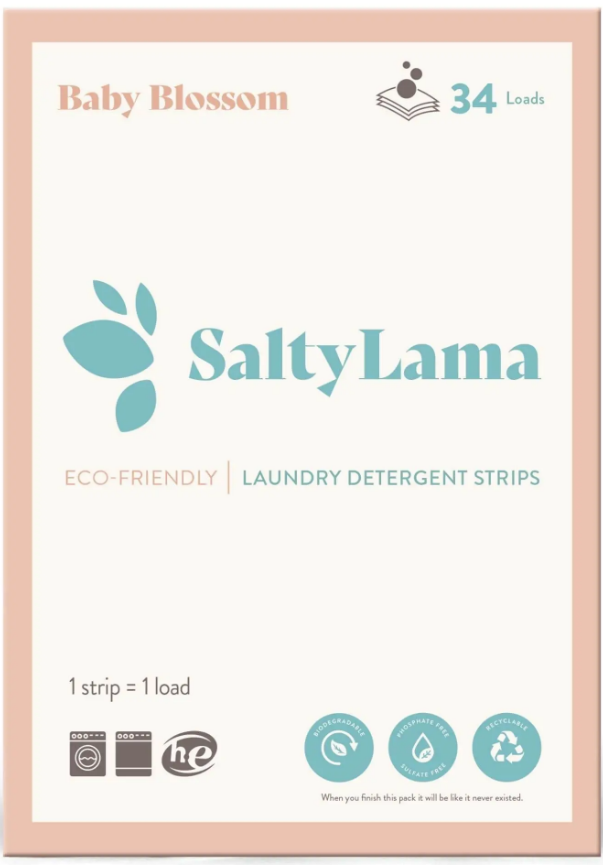
Sustainable Design
-
Ever wonder where all those big plastic laundry detergent jugs end up? No worrying with eco friendly detergent strips!
-
Detergent strips, like these ones from Salty Lama offer totally compostable packaging!
Wool dryer balls
-
You can reduce the dryer time by quite a bit! They also soften clothes and can even reduce static
-
You can look to wash the wool dryer balls in hot water to help “recharge” them!
-
A great alternative to using plastic bags or other big wasteful material.
-
From bamboo to other sustainable materials, find the one that suits you!
What is sustainable design?
Sustainable design is the art and science of designing products, buildings, and systems that minimize environmental impact while maximizing human health and well-being. It is based on the principles of ecological design, which seek to integrate human activity with natural ecosystems. Sustainable design has its roots in the late 19th century arts and crafts movement and the 20th century environmental movement.
The field of sustainable design has grown rapidly in recent years, as concerns about climate change, energy security, and other environmental issues have become more pressing. Today, sustainable design is an interdisciplinary field that includes architects, engineers, planners, designers, biologists, ecologists, economists, and policy experts.
There are many different approaches to sustainable design. One common approach is to design products, buildings, and systems that use less energy, water, and materials. Another is to design for durability and reuse. Still another is to design for efficiency and waste reduction.
The most important thing is to design with a holistic view of the environment and human activity. Sustainable design must take into account the entire life cycle of a product or system, from raw materials to end-of-life disposal. It must also consider the impact of human activity on natural ecosystems.
Sustainable design is not about making sacrifice; it's about making smart choices that result in a healthier, more prosperous future for all of us.
How did sustainable design become so popular in 2022?
Sustainable design has become increasingly popular in recent years as awareness of environmental issues has grown. The field of sustainable design is interdisciplinary, and there are many different approaches to sustainable design. Some common approaches include designing products, buildings, and systems that use less energy, water, and materials; designing for durability and reuse; or designing for efficiency and waste reduction. The most important thing is to design with a holistic view of the environment and human activity. Sustainable design must take into account the entire life cycle of a product or system, from raw materials to end-of-life disposal. It must also consider the impact of human activity on natural ecosystems. Sustainable design is not about making sacrifice; it's about making smart choices that result in a healthier, more prosperous future for all of us. In 2022, sustainable design will continue to grow in popularity as more people become aware of the importance of environmental stewardship.
What are the four areas of sustainable design?
There are four main areas of sustainable design: energy, water, materials, and waste. Designers must consider the entire life cycle of a product or system when they are designing it, from raw materials to end-of-life disposal. They must also think about the impact of human activity on natural ecosystems. Sustainable design is not about making sacrifice; it's about making smart choices that result in a healthier, more prosperous future for all of us.
What is the most important thing to remember about sustainable design?
The most important thing to remember about sustainable design is that it must take into account the entire life cycle of a product or system, from raw materials to end-of-life disposal. It must also consider the impact of human activity on natural ecosystems. Sustainable design is not about making sacrifice; it's about making smart choices that result in a healthier, more prosperous future for all of us.
Is there a difference between green design and sustainable design?
Green design is a type of sustainable design. It focuses on creating products, buildings, and systems that have a minimal impact on the environment. Green design often uses recycled materials and energy-efficient technologies. Sustainable design is a broader term that includes green design but also takes into account the entire life cycle of a product or system, from raw materials to end-of-life disposal. It must also consider the impact of human activity on natural ecosystems. Sustainable design is not about making sacrifice; it's about making smart choices that result in a healthier, more prosperous future for all of us.
What are some examples of sustainable design?
Some examples of sustainable design include using recycled materials, designing for durability and reuse, or designing for efficiency and waste reduction. Sustainable design must take into account the entire life cycle of a product or system, from raw materials to end-of-life disposal. It must also consider the impact of human activity on natural ecosystems. Sustainable design is not about making sacrifice; it's about making smart choices that result in a healthier, more prosperous future for all of us.
What are the benefits of sustainable design?
Sustainable design has many benefits. It can help reduce pollution, conserve resources, and save money. Sustainable design must take into account the entire life cycle of a product or system, from raw materials to end-of-life disposal. It must also consider the impact of human activity on natural ecosystems. Sustainable design is not about making sacrifice; it's about making smart choices that result in a healthier, more prosperous future for all of us.
What are the challenges of sustainable design?
One of the challenges of sustainable design is that it can be difficult to find materials that meet all the criteria for sustainability. Another challenge is that sustainable design often requires a change in mindset and behavior. Sustainable design must take into account the entire life cycle of a product or system, from raw materials to end-of-life disposal. It must also consider the impact of human activity on natural ecosystems. Sustainable design is not about making sacrifice; it's about making smart choices that result in a healthier, more prosperous future for all of us.
Are there sustainable design courses available to take online?
Yes, there are a number of sustainable design courses available online. These courses typically cover topics such as the principles of sustainable design, life cycle assessment, and material selection. Many of these courses are offered through universities and colleges. Sustainable design must take into account the entire life cycle of a product or system, from raw materials to end-of-life disposal. It must also consider the impact of human activity on natural ecosystems. Sustainable design is not about making sacrifice; it's about making smart choices that result in a healthier, more prosperous future for all of us.
What are some common sustainable design certifications?
There are a number of sustainable design certifications available. These certifications typically cover topics such as the principles of sustainable design, life cycle assessment, and material selection. Many of these courses are offered through universities and colleges. Sustainable design must take into account the entire life cycle of a product or system, from raw materials to end-of-life disposal. It must also consider the impact of human activity on natural ecosystems. Sustainable design is not about making sacrifice; it's about making smart choices that result in a healthier, more prosperous future for all of us.
What are some common sustainable design tools?
There are a number of sustainable design tools available. These tools typically cover topics such as the principles of sustainable design, life cycle assessment, and material selection. Many of these courses are offered through universities and colleges. Sustainable design must take into account the entire life cycle of a product or system, from raw materials to end-of-life disposal. It must also consider the impact of human activity on natural ecosystems. Sustainable design is not about making sacrifice; it's about making smart choices that result in a healthier, more prosperous future for all of us.
What are some common sustainable design principles?
There are a number of sustainable design principles. These principles typically cover topics such as the principles of sustainable design, life cycle assessment, and material selection. Many of these courses are offered through universities and colleges. Sustainable design must take into account the entire life cycle of a product or system, from raw materials to end-of-life disposal.
Simply put, sustainable design continues to evolve. And this is only the beginning of the innovation!





